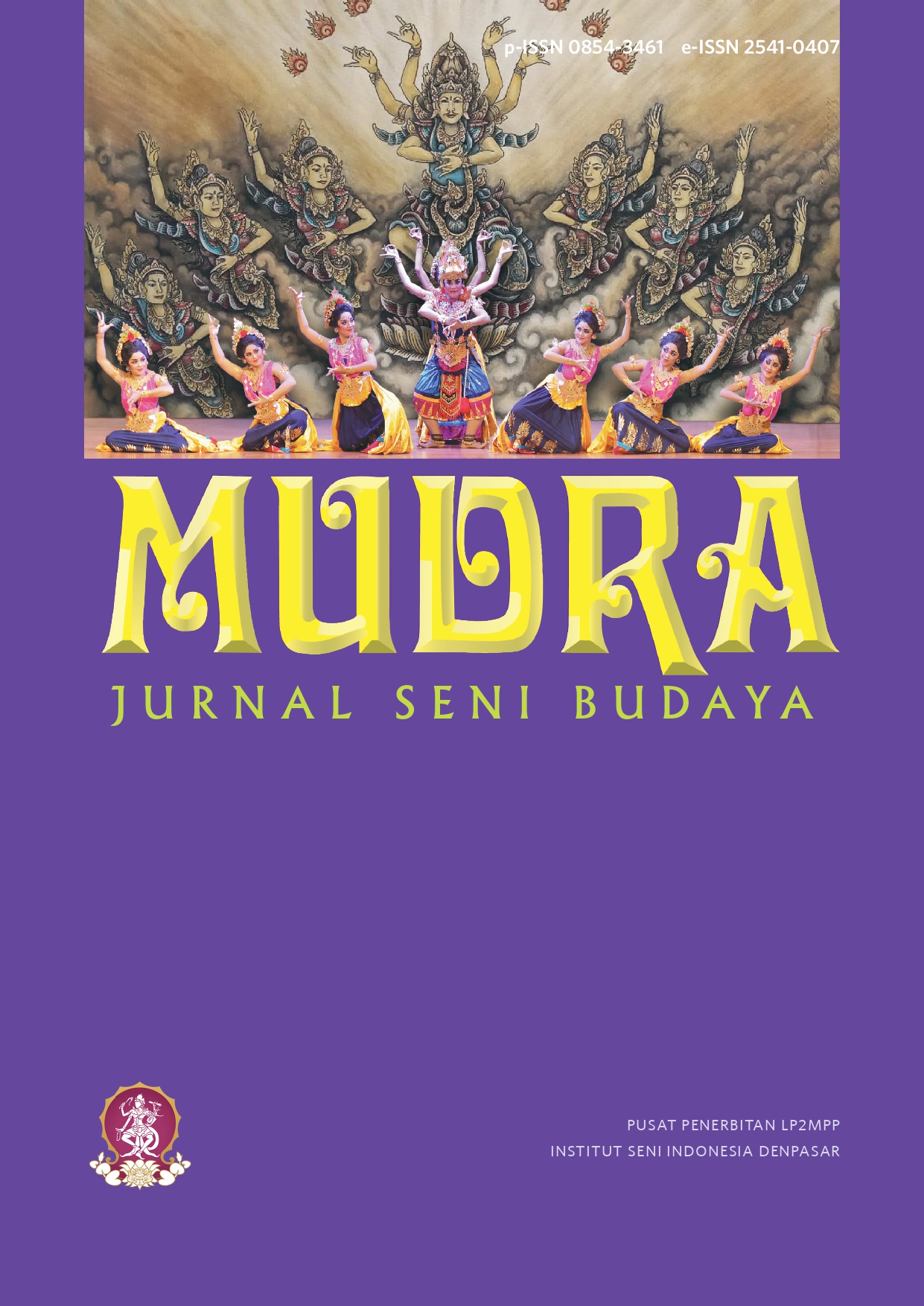Manifestation of Circular Economy in Repurposable Green Furniture Design, A Project-Based Learning by Interior Design Student
DOI:
https://doi.org/10.31091/mudra.v40i1.3045Keywords:
circular economy, furniture design, repurposable green materials, project based learningAbstract
This article reveals the embodiment of circular economy in interior design students' design of reused green furniture. The circular economy is becoming important, mainly in dealing with the problem of inorganic waste. The main focus is how the circular economy concept can be taught through actual practice, where students collaborate with stakeholders, namely TPS3R and the green industry, to design environmentally friendly and sustainable furniture. This applied research uses the double-diamond method from the UK Design Council to guide the design process, including Discovery, Definition, Development, and Delivery, emphasizing the first diamond for field research and the second diamond for design development. This method has enabled students to understand and practically apply circular economy principles. The applied research was conducted over 16 weeks for field research and studio work on campus. Although all the research results are not yet satisfactory, they show that this project-based learning approach effectively improves students' understanding of sustainability and innovation in furniture design. In addition, the collaboration with the green industry also enriched students' learning experiences and strengthened the link between education and industrial practice in sustainable design.Downloads
References
E. MacArthur, “The circular economy in detail: deep dive,” Ellen MacArthur Foundation. [Online]. Available: https://ellenmacarthurfoundation.org/the-circular-economy-in-detail-deep-dive
W. R. Stahel, “The circular economy,” Nature, vol. 531, no. 7595, pp. 435–438, 2016.
J. Kirchherr, D. Reike, and M. Hekkert, “Conceptualizing the circular economy: An analysis of 114 definitions,” Resources, Conservation and Recycling, vol. 127, no. April, pp. 221–232, 2017, doi: 10.1016/j.resconrec.2017.09.005.
V. Papanek, The green imperative: ecology and ethics in design and architecture. Thames & Hudson, 2022.
E. M. Foundation, Tim Brown: Design & Circular Economy, (2023).
E. Manzini, Políticas do cotidiano. Editora Blucher, 2023.
A. S. Keraf, Ekonomi Sirkuler Solusi Krisis Bumi. Kompas, 2022.
Z. Zhu, W. Liu, S. Ye, and L. Batista, “Packaging design for the circular economy: A systematic review,” Sustainable Production and Consumption, vol. 32, pp. 817–832, 2022, doi: 10.1016/j.spc.2022.06.005.
C. Szerakowski, “Transitioning ikea towards a circular economy: A backcasting approach,” 2017.
S. D. Hewa Witharanage, K. Otto, W. Li, and K. Holtta-Otto, “A Repurposable Attribute Basis for Identifying Repurposing Opportunities in Decommissioned Products,” Journal of Mechanical Design, vol. 147, no. 2, 2025, doi: 10.1115/1.4066127.
F. D. K. Ching and C. Binggeli, Interior design illustrated. John Wiley & Sons, 2018.
X. Wang, R. Shi, and F. Niu, “Optimization of furniture configuration for residential living room spaces in quality elderly care communities in Macao,” Frontiers of Architectural Research, vol. 11, no. 2, pp. 357–373, 2022.
R. Kilmer and O. Kilmer, “Designing Interiors. John Willey & Sons,” 2014, New Jersey.
E. Muniarti, “Penerapan Metode Project Based Learning Dalam Pembelajaran,” Journal of Education, vol. 3, no. 1, pp. 1–18, 2021.
Trianto, Mendesain Model pembelajaran inovatif. Jakarta: Pranada Media Group, 2014.
P. D. Anggraini and S. S. Wulandari, “Analisis penggunaan model pembelajaran project based learning dalam peningkatan keaktifan siswa,” Jurnal Pendidikan Administrasi Perkantoran (JPAP), vol. 9, no. 2, pp. 292–299, 2021.
D. Council, “Double Diamond framework for innovation,” 2019.
Downloads
Published
How to Cite
Issue
Section
License
Copyright (c) 2025 Suastiwi Triatmodjo, Nurcahyo Mahdi

This work is licensed under a Creative Commons Attribution-NonCommercial-ShareAlike 4.0 International License.
- Copyright on any open access article in a journal published by Mudra Jurnal Seni Budaya is retained by the author(s).
-
The Creative Commons Attribution License 4.0 formalizes these and other terms and conditions of publishing articles.









